Single vs. Half vs. Twin Ropes: An Easy Guide (2024)
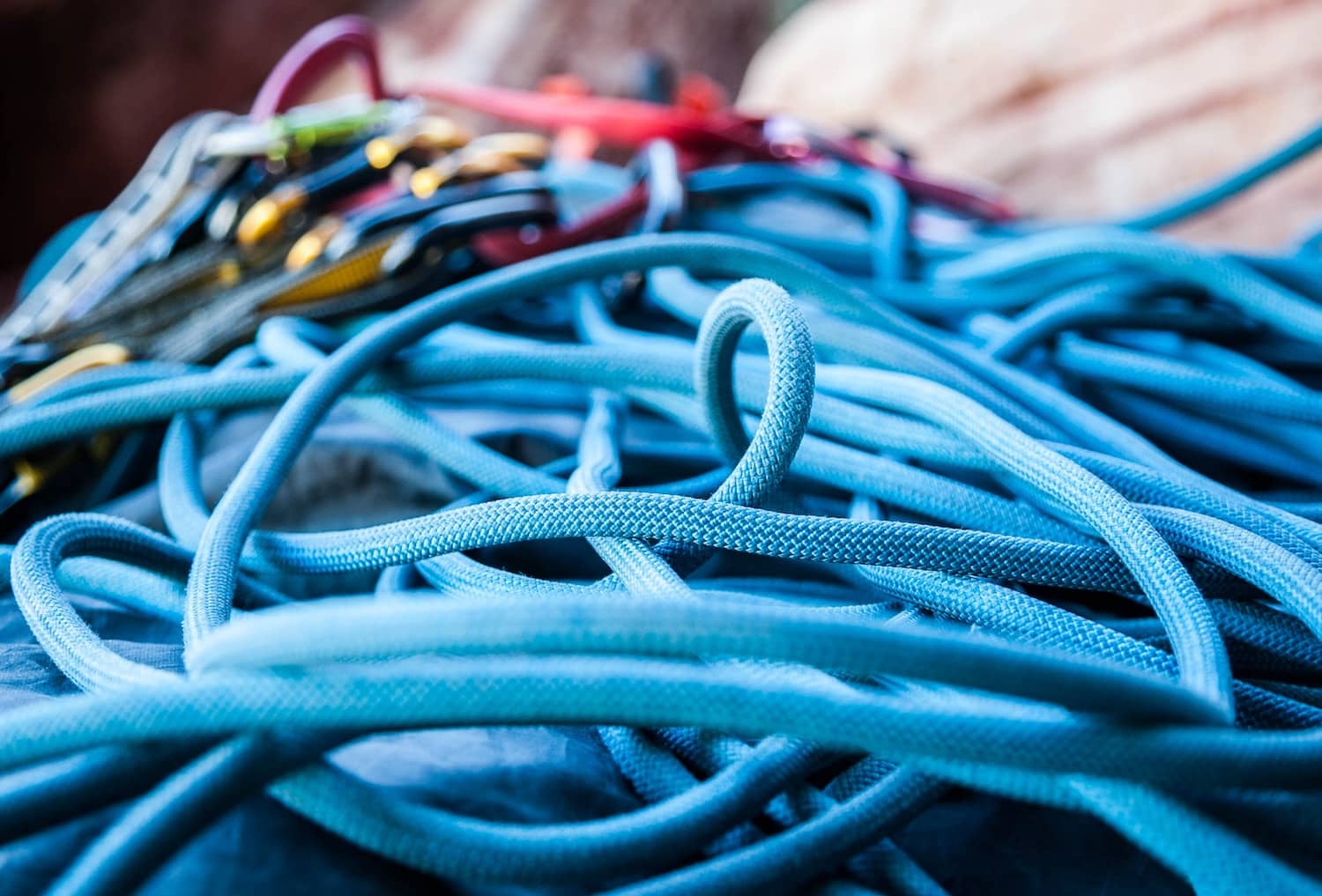
Published on: 09/07/2023
By Teddy Dondanville, AMGA
For sport and trad climbers, the climbing rope is one of the most essential pieces of equipment. The climbing rope, paired with a harness, well-placed (or clipped) protection, and a competent belayer, helps ensure you stay off the deck when you take a whipper, allowing you to live another day (and hopefully send).
However, like most things in rock climbing, there are a lot of things to consider and options two choose from when looking for a climbing rope. In this article, I’ll talk about the key differences between a single rope vs. half rope vs. twin rope.
By the end, I hope you’ll have a better understanding of climbing ropes. Then, if I did my job well enough, you’ll possess the knowledge you’ll need to pick out your next rope with confidence.
Single vs. Half Rope
The first distinction I want to make clear is between single and half ropes. Then, later in the article, I clear up the differences between half and twin ropes.
Single Ropes
Single ropes are the simplest and the most common. When you climb with a single rope, you clip all your pieces of gear (whether on a bolted sport climb or a trad climb) into one rope.
Belaying with a single rope is also simple. You can load it into a “single barrel” belay device, like a Petzl Grigri. Or into one of the two slots in a “double-barreled” tube-style device, like the Black Diamond ATC Guide.
For rappelling, you rig the rap at the halfway mark on the rope and rappel on two strands for half the length of the rope, which is most commonly between 30 to 35 meters.
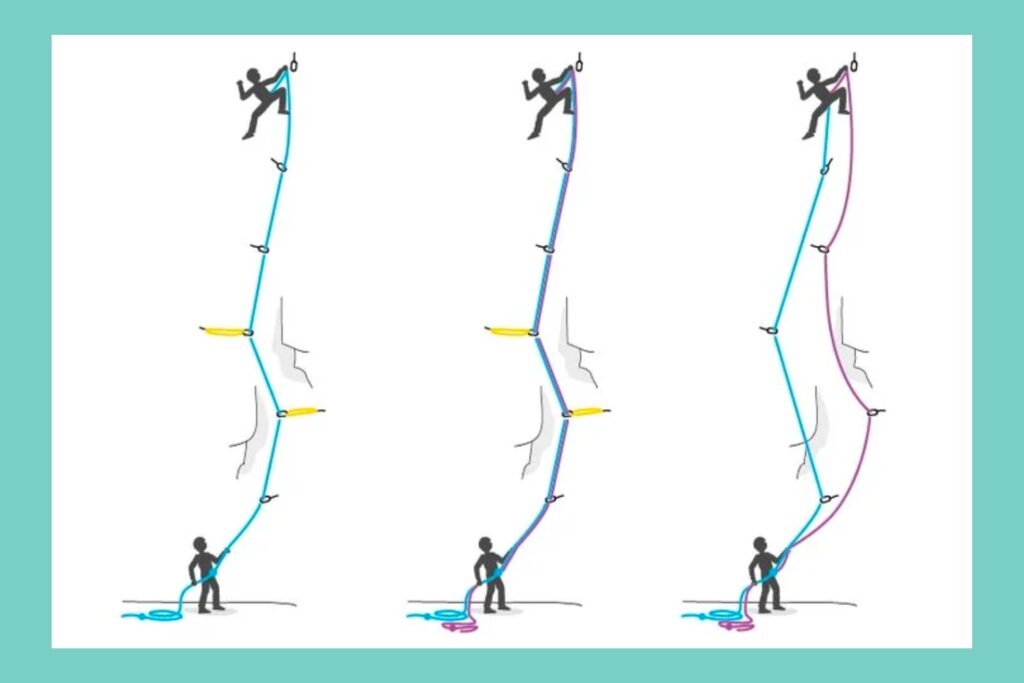
Half Ropes
On the other hand, half ropes are slightly more complicated. When you climb with half ropes, you tie into each rope on either side of your belay loop. Then, when you climb, you clip the half ropes individually into different pieces.
Normally, you clip the rope on the left side of your belay loop to pieces of protection on the left side of your body. Then, the gear you place on the right side of your body is clipped with the other rope on the right side of your belay loop.
When you do this, the ropes should be clipped in alternating order–that way, there is no one section of the route where only one rope is clipped.
Belaying with half ropes requires a double-barrel tube-style device. Then for rappeling, both half ropes can be tied together with a flat overhand knot (or a double fisherman’s knot) so that you can rappel the full length of the two ropes instead of rappelling half of the rope.
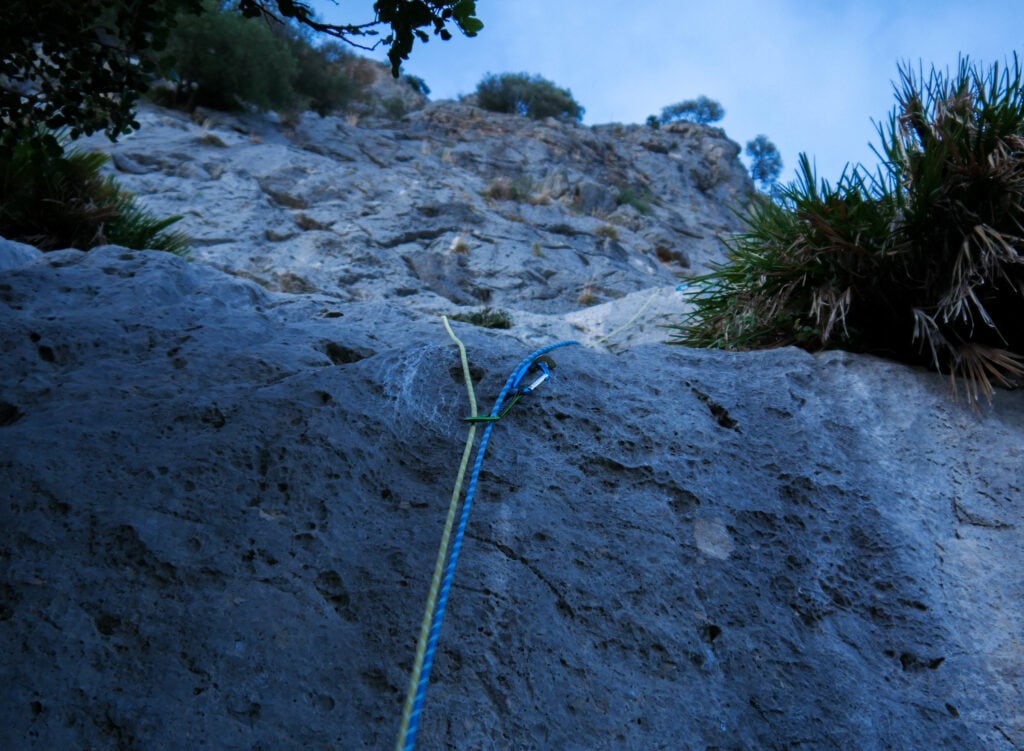
Half vs. Twin Ropes
When compared to a half rope system, twin ropes are similar but still different. Like a half rope system, when you climb with twin ropes, you tie into and climb with two ropes.
Here’s the main difference: unlike half ropes, with twin ropes, you must clip every piece of protection with both ropes. That’s because twin ropes are not designed to be used individually.
For belaying, you have to use belay devices that can accommodate two ropes. In the case of twin skinny ropes, it may be advantageous to belay with a belay device designed for skinnier ropes, like the Black Diamond ATC Alpine Guide.
Rappelling with twin ropes is similar to a half rope system. You tie the two twin ropes together to rappel the full length of the two ropes.
However, it is important to mention that the skinny diameter makes rappelling on twin ropes significantly faster (this dynamic is also true for half-rope systems). Therefore, I recommend rappeling with a third-hand backup, like always.
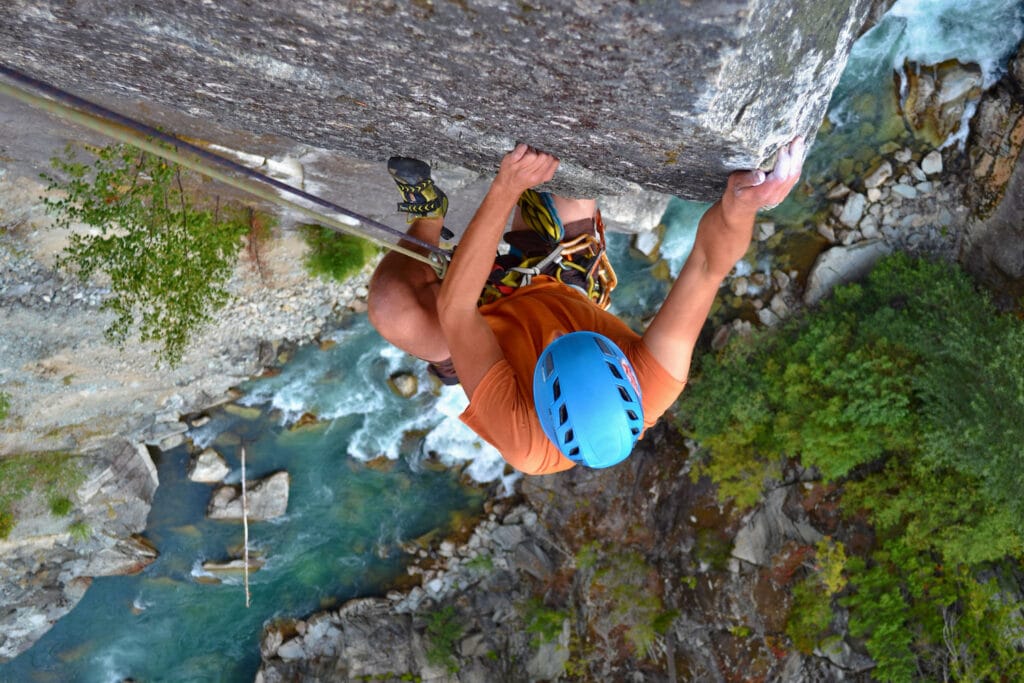
Diameter Differences Between Dynamic Ropes
Single ropes usually range between 8.5 and 11 millimeters in diameter. The single ropes on the skinner side of the spectrum are ideal for multi-pitch, alpine climbing, or redpointing your project because they are lighter.
On the other side of the spectrum, thicker single ropes are better designed for top-roping, cragging, and shorter, simpler multi-pitches.
The diameter of half ropes is in the 8-millimeter range. They are tested separately. Therefore, they each have their own fall rating. This is important because you want the two ropes to act independently in the event of a fall to mitigate the force exerted onto your protection.
Of the three types of ropes, twin ropes are the skinniest. A twin rope normally has a diameter in the 7-millimeter range. Twin ropes are tested and rated as a pair. Therefore, they should always be used together. And you should never climb with two followers on twin ropes.
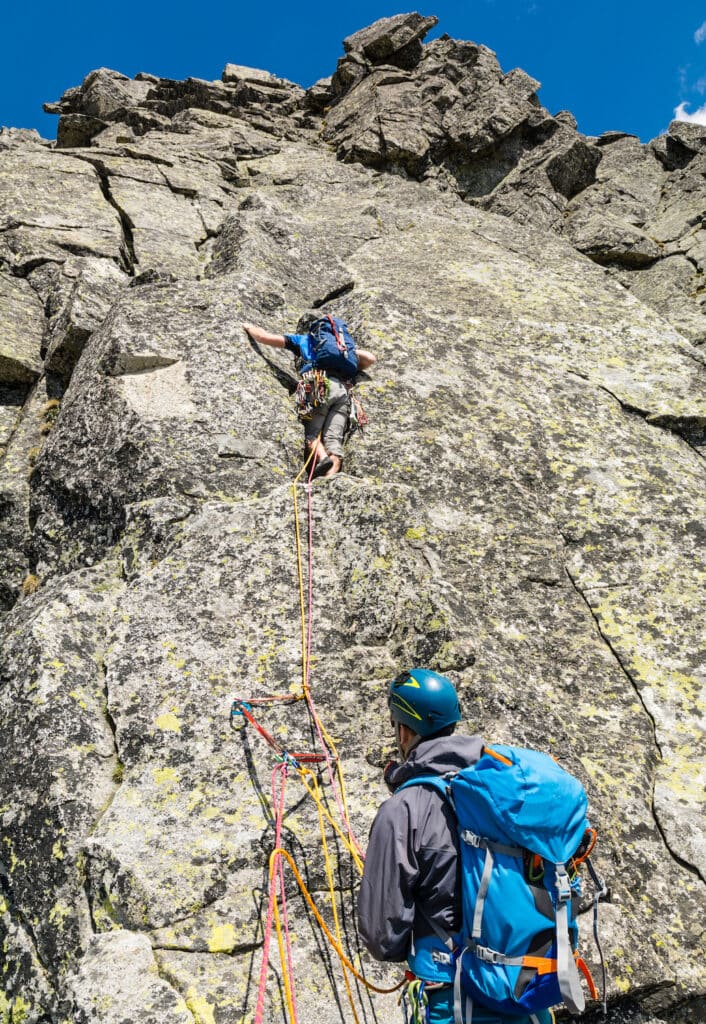
Climbing Scenarios
In most rock climbing scenarios, a single rope is all that you need. For example, I have a selection of single ropes (a skinny 60-meter, a skinny 70-meter, and a thick 60-meter for top roping) that I use for different scenarios.
However, as you get into more niche objectives, you may need to explore the capabilities of twin and half ropes. Below I will share some common climbing scenarios for each type of rope.
Single Rope Climbing Scenarios
Top-rope climbing
A thicker single rope is ideal for setting up top ropes. A thicker rope can withstand the wear and tear that comes with top roping. And in a top rope setting, you are not normally concerned about weight savings.
Single-pitch sport climbing
If you enjoy single-pitch sport climbing, a single rope is all you need. When compared to top roping, thinner and lighter single ropes are preferred for sport climbs because they can be easier to manage and clip. However, if your typical approach is short, and you don’t mind the extra weight, a thicker single rope for sport climbing will last longer.
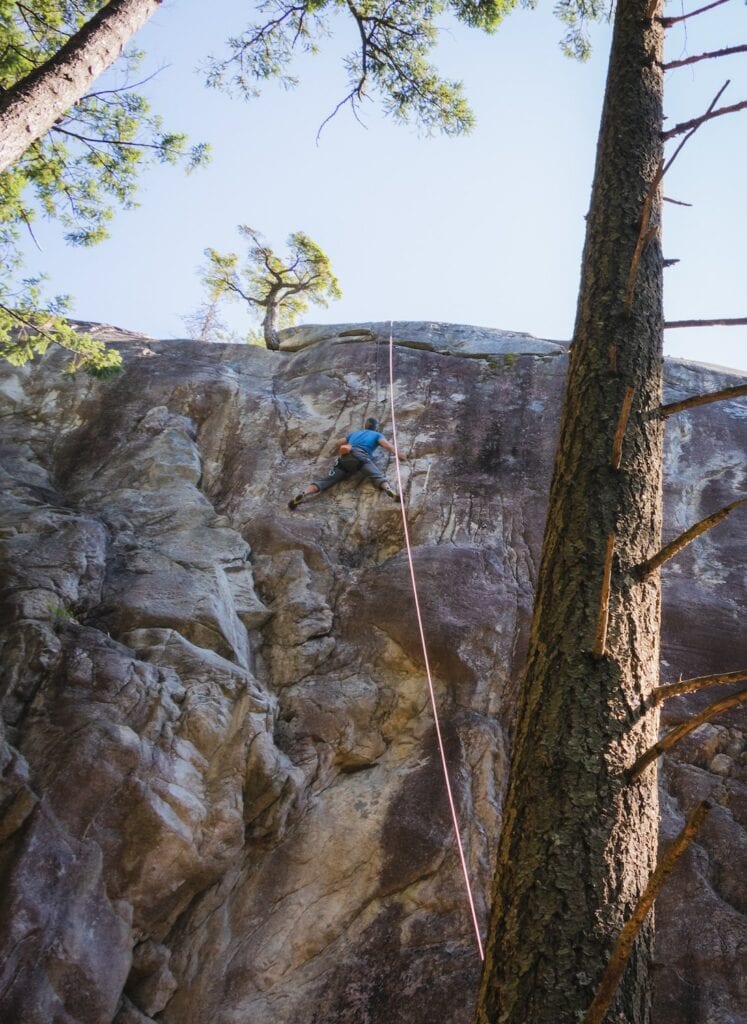
Multi-pitch sport or trad climbing
Single ropes can also be used in a multi-pitch setting. For multi-pitching, a single rope is ideal if the route does not wander or you plan to walk off the top. But you can also rappel off a multi-pitch climbing route with a single rope. In the case of rappelling, if the rappels do not require full-length rappels (usually 60 meters), then a single rope is perfectly fine.
Multi-pitch climbs in a party of three
Multi-pitching is most commonly accomplished in a team of two. However, to climb in a trio, you can use two single ropes (preferably the same diameter) to belay the second and third climbers from the top.
Half Rope Climbing Scenarios
Single-pitch trad routes with wandering movement and gear
The primary advantage of half ropes is that you can clip them individually into pieces of protection to mitigate rope drag. This is ideal for single-pitch routes that have opportunities for gear off the climbing line.
Long routes with wandering movement
In a multi-pitch setting, half ropes can be ideal because they can help you reduce rope drag on wandering routes. For example, ascents that connect incipient cracks, traverse step-around corners or climb through roofs.
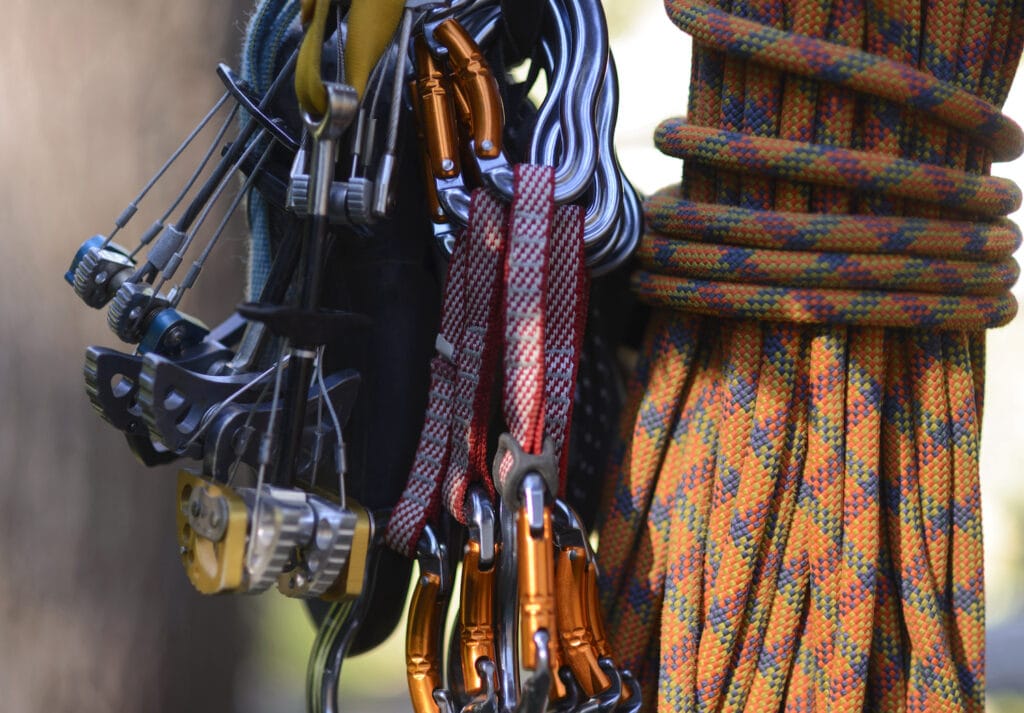
Multi-pitch routes that require longer rappels
Depending on the descent route, certain climbs may require full-length rappels. This is made possible by tying two half ropes together. Or, in case of emergency or bad weather, half ropes can be advantageous for descending faster.
Twin Rope Climbing Situations
Multi-pitch routes deep in the backcountry
Saving weight is important for climbing objectives that are far in the backcountry and require a long approach. Two twin ropes are often the lightest option between single ropes and half ropes. In addition, twin ripes are especially advantageous if the climbing line goes straight up (does not wander) and if full-length rappels are required to get down.
Ice climbing
Twin ropes are often used in ice climbing because having two ropes helps protect against rope cuts from sharp ice. In addition, twin ropes are super stretchy, which helps limit the impact force exerted onto ice screws in the event of a leader fall. And typically, in ice climbing, the routes rarely wander. Plus, the longer you can rappel, and the faster you can descend, the better.
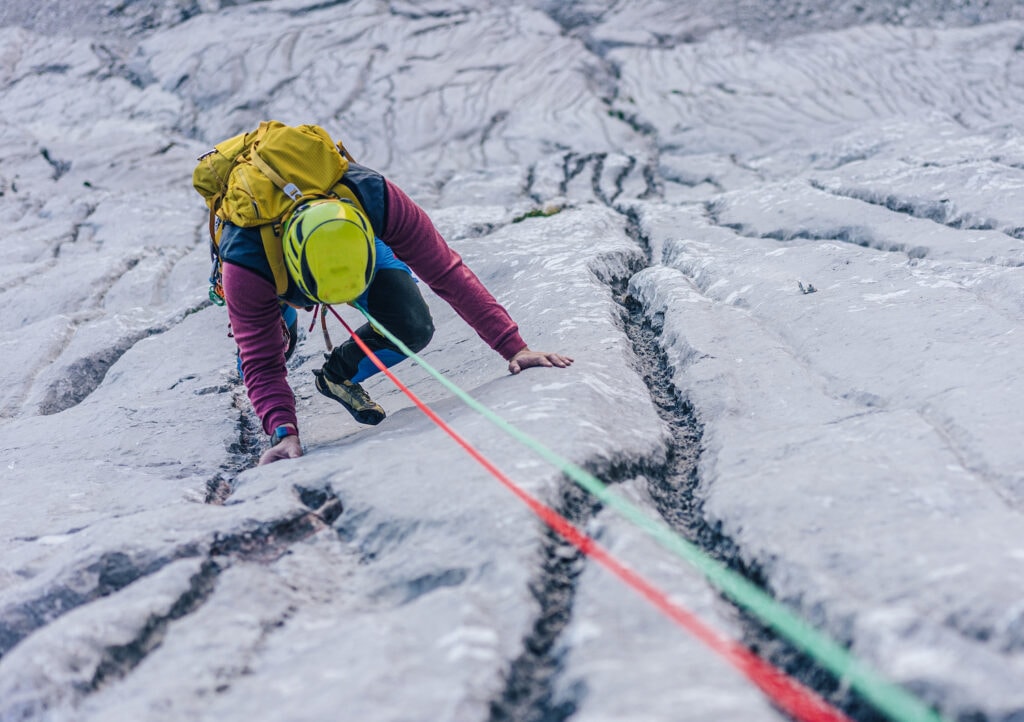
Buying Considerations
Single Ropes
- Length: for most outdoor climbing, you can get away with a 60-meter rope. However, 70-meter ropes are great to have also, especially if the crag you are climbing at features long routes.
- Halfway marked: themiddle mark on a single rope is super important. Make sure there is a middle mark or a bi-pattern or color design so you know where the middle is for rappelling.
- Weight: the weight of a single rope comes from its length and diameter. The thinner and short a rope, the more lightweight it will be. For most climbers, the weight of a single rope is a non-issue, especially for casual cragging. But for climbers going deep into the alpine, a skinny rope is an excellent way to save weight.
- Dry treatment: most of us are fair-weather climbers. Therefore, dry-treated ropes are more a luxury than a necessity. Especially if your single rope only gets used at the sport crag or in the gym.
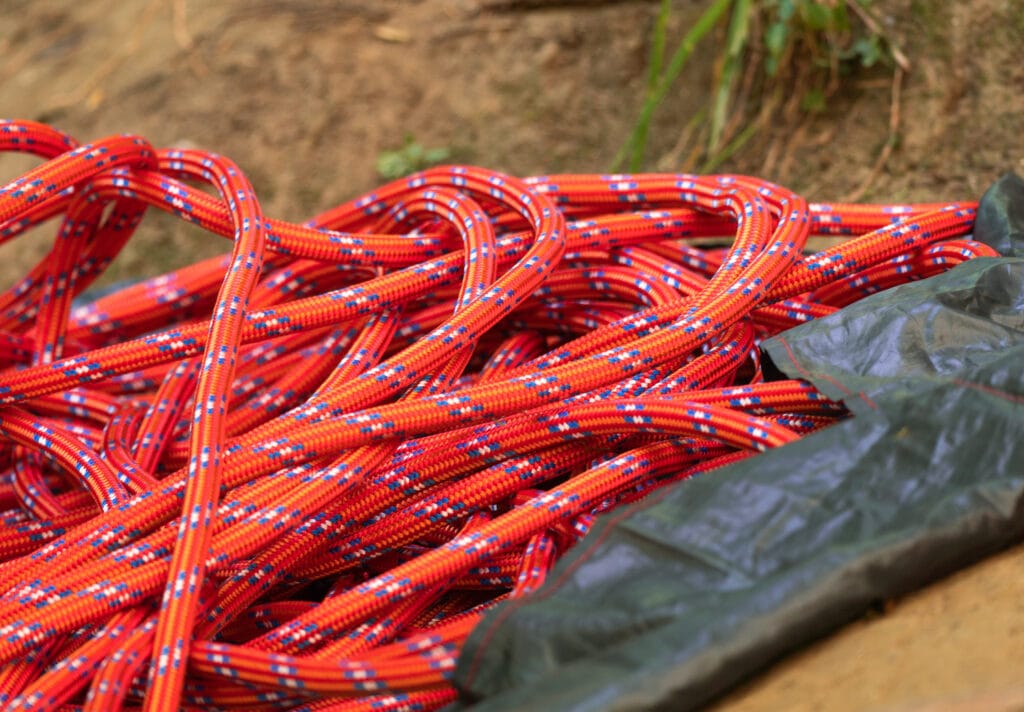
Half and Twin Ropes
- Length: in a half rope or twin rope system, 60 meters is typically more than enough. I would stray away from a 70-meter double rope system.
- Color: when climbing with double ropes, make sure the ropes are different colors. Different color ropes will make your life so much easier.
- Dry treatment: if you plan to go ice climbing or want to prevent your rope from soaking up water in the rain, dry-treated ropes are ideal. Plus, dry-treated double ropes are also more durable and resistant to abrasion.
- Double- and triple-rated ropes: some half ropes are “double rated” meaning that they are strong enough to be used either like twin or half ropes. In addition, some ropes are “triple rated,” meaning they can be used in a two rope system, or by themselves a single.
Final Thoughts- Select the Correct Tool for the Job
Overall, you have to remember that climbing ropes are tools that help you accomplish your climbing task. Therefore, you should select the correct tool for the job and not assume that your trusty screwdriver will help you fix everything.
In other words, matching your climbing rope to the objective is important. This typically means having a small selection of ropes you can deploy at different times is ideal.
However, with that being said, if I am being honest, most of your climbing will call for a single rope. So first, get a reliable and versatile single dynamic rope, then branch out if twin or half ropes are better suited for your future climbing objectives.
Have fun, be safe, and always check your knots!
